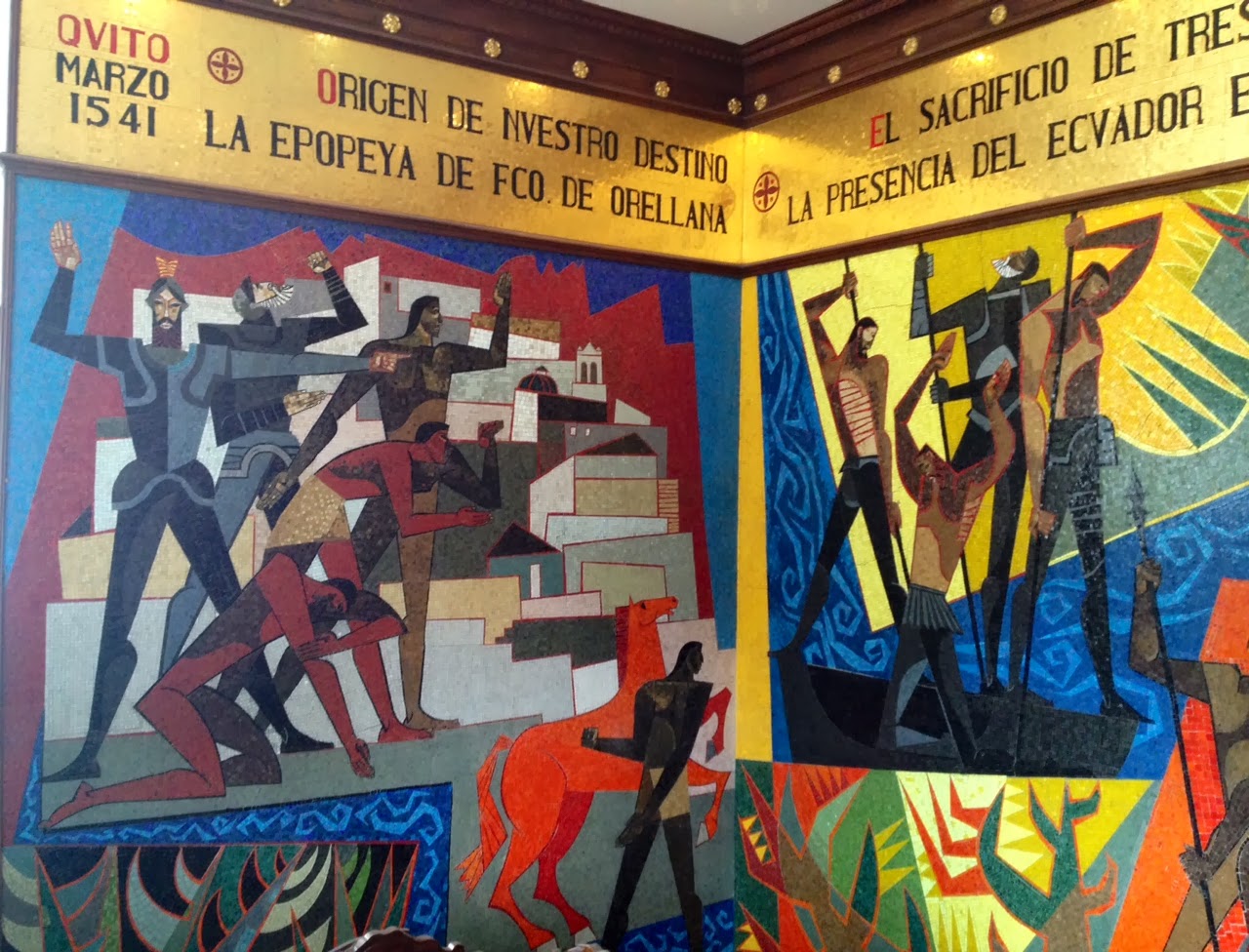BIKE-BIKE-BIKE in QUITO!
 Like
to ride bike? Want to join a group road
ride? Prefer mountain biking to road
biking?
Like
to ride bike? Want to join a group road
ride? Prefer mountain biking to road
biking?Quito has that and more.
Quito’s
bike scene is thriving – and while the roads are not as smooth as we’re used to
and the bike lanes less prevalent than NW riders have become accustomed - the
enthusiasm for cycling in Quito is contagious.
Hardly a day goes by without an article and photo of a cycling
event in the cities’ main paper – El Comercio.
Every
Sunday, a main thoroughfare in Quito (Avenue de los Amazonas) is completely
closed to cars from 6:00am – 2:00pm. Not
only is the road closed, there are aid stations providing for repairs and
fluids, policemen and women monitoring crossings and live music and
entertainment are common place at the
old airport.
 |
| Sculptures at the old Quito Airport - now part of Parque Bicentenario |
 |
| A little help from some kind Ecuatorianos when fixing rental bikes~ |
 |
| Turn into Parque Bicentenario and you're sure to be entertained and fed! |
The first Ciclopaseo in Quito took place in
April 2003 when the path was only
9.5 km and 3,000 people participated. At that point, Ciclopaseos were only
held on the last Sunday of every month. But the event grew in popularity. In six
months the route grew to 20 km with 25,000 participants.
Now every Sunday between 50 000 and
70 000 people participate in this weekly “paseo” on wheels! Currently, the route is 50+K round trip, through the heart
of El Centro (historic Old Town) south to Quitumbe and north to the old airport
and Parque Bicentenario.
 |
| It's a bicycle! It's an elliptical trainer! - I love it! |
While it’s
called “Ciclopaseo” the users include walkers, joggers, roller-bladers, young children
learning to ride with training wheels, young lovers riding double, and dogs - plenty
of dogs.
We’ve seen
dogs on leashes, dogs in front baskets, dogs in backpacks, dogs, dogs,
dogs. Reminds one of the children’s book:
“Go Dogs Go!” Thankfully, we have never
seen them unleashed!
 |
| A great way to experience El Centro |
We’ve been participating in the Ciclopaseo from August through December and plan to continue throughout our "Year of Adventure" in Ecuador!
































